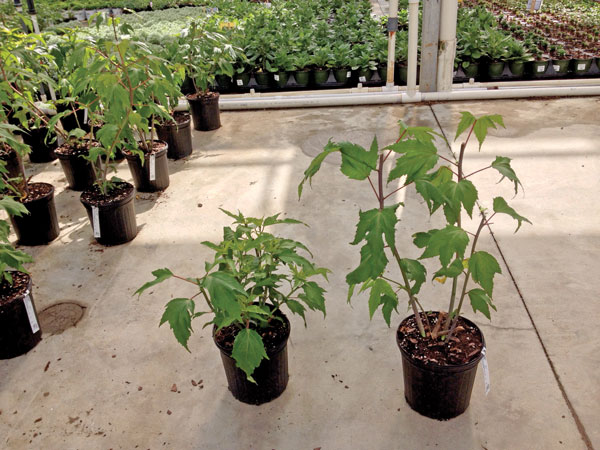6/1/2019
Act Quickly … Your Crops Are Depending on It
Paul Pilon
Growing perennials sure comes with its share of challenges. One thing I’ve learned over the years (usually the hard way) is the importance of acting quickly when identifying the need to take action. This makes sense as plants are alive and continually respond to the environment around them and are susceptible to diseases, insects and abiotic disorders. Failure to act can often lead to a reduction in plant quality or even worse—crop losses. Please allow me to give you a few cases where there’s no time to spare.
Take diseases, for example
Under the right conditions, many diseases can infect plants in a matter of hours. Downy mildew can infect a plant when the leaves stay wet for approximately six hours and often occurs in the early morning when the leaves are wet from dew. Many pathogens, including botrytis and most leaf spot pathogens, require between four and six hours of leaf wetness for infections to occur.
Once a plant is infected, each pathogen develops at different rates and, of course, the severity of the symptoms also varies greatly. With some diseases, the symptoms are somewhat minor, can be tolerated or easily removed. However, in other instances, the damage can be quite severe or even catastrophic, leading to significant plant losses. How many times have you experienced a disease (perhaps downy mildew) that literally occurred overnight?
When a grower is seeing plants actively collapsing from crown or root rots, I often hear them say, “I’ll apply a fungicide drench the next time they need water.” I always question them on that approach. After all, the plants are actively collapsing and they want to wait to give the plants the medicine (fungicide) that may save the entire crop. Adding moisture may not feel like the best thing to do, but rest assured that waiting allows the disease to progress, and further damage and losses will result. Applying a fungicide drench will slow down and hopefully stop the disease even when using water as the carrier of the fungicides. Waiting shouldn’t be an option.
Why act now? As these examples demonstrate, waiting to implement control strategies can adversely affect the crops. When it comes to plant pathogens, I strongly encourage you to act quickly!
PGRs
Effectively using PGRs to manage plant growth and size is a subject in itself. I’m not even going to attempt to cover the ins and outs of using PGRs here, but there's one point I’d like to make. Once you’ve identified the need to apply PGRs to a crop, I encourage you to apply them as soon as possible.
 Pictured: The hibiscus on the left was pinched on time and is beginning to develop new branches. The plant on the right wasn’t pinched on time, and is taller and will likely develop fewer branches. There will be a big difference in final plant quality between these two hibiscus plants.
Pictured: The hibiscus on the left was pinched on time and is beginning to develop new branches. The plant on the right wasn’t pinched on time, and is taller and will likely develop fewer branches. There will be a big difference in final plant quality between these two hibiscus plants.
Plants are continuously growing, and waiting one or more days to make the PGR application means the plants are already taller than they were when you first decided to make the application. Depending on the plant and the amount of time that’s passed, the plants could be several inches taller by the time the applications are actually applied compared to where they were when the need for PGR applications was first identified.
To get the most out of your PGR applications, I implore you to act quickly once you’ve made the decision to apply them to a crop.
Make “Act Quickly” your mantra
Whether you discovered a disease, determined the need to apply a PGR or decided to perform some other activity, such as pinching or spacing a crop, time is of great essence. Prolonging the execution of these activities will often have negative consequences on the crop. These consequences could be an increase in plant size, reduced crop quality and marketability, increased production times, or in some instances even plant mortality.
I encourage you to make “Act Quickly” your mantra and take steps to help you achieve these necessary tasks in a timely manner. It would be ideal if you could take action the same day you identified the need to do something. Realistically, I understand that acting the same day isn’t always an option; therefore, I challenge you to complete these tasks within 48 hours or two days of identifying the need to perform activities to a crop. GT
Paul Pilon is a Perennial Production Consultant and editor-at-large of the Perennial Pulse e-newsletter. Feel free to contact him with article topics or to address your perennial production challenges. He can be reached at paul@perennialsolutions.com.